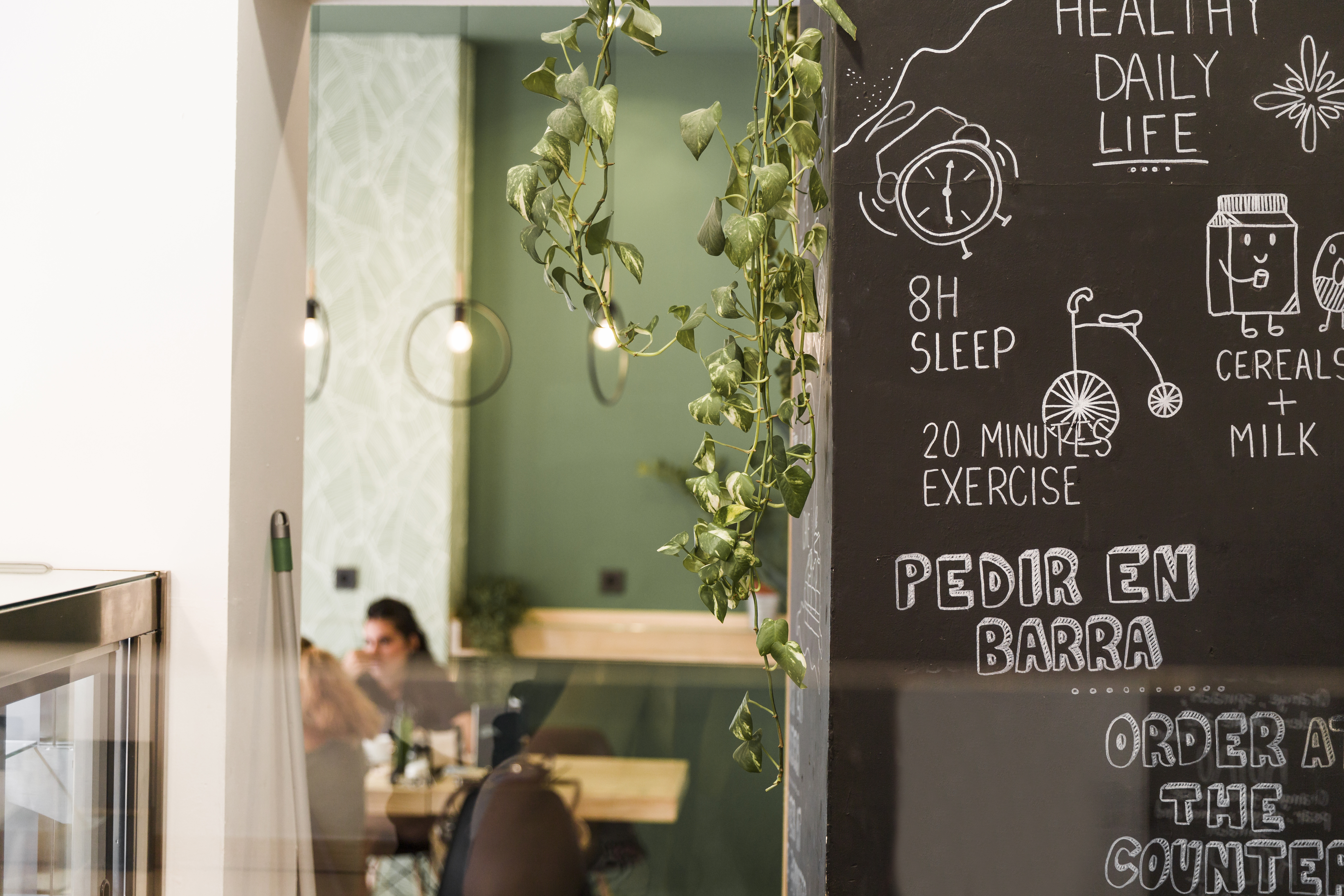What is a modern coffee shop? Style, Atmosphere, and Functionality
A modern coffee shop is not just about aesthetics. It's a combination of comfort, smart design, and consistency with the identity of the place. The goal is to create an environment that conveys personality and invites people to stay.
Essential aspects to consider:
- Open and clean environment, with good circulation.
- Ergonomic furniture with design.
- Use of natural or textured materials.
- Well-defined color palette (and consistent).
- Visual integration of branding (logos, colors, aromas).
- Adaptive lighting: warm light for relaxation, focused light for work.
- Spaces designed for interaction or disconnection.
And, above all, a modern coffee shop must be a functional space for the team working in it. A spectacular marble counter is useless if the baristas keep bumping into each other.
Trending Decorative Styles
The decorative style defines the character of the place. These are the four most popular decorative styles today for modern coffee shops:
Minimalist and Nordic
Inspired by Scandinavian functionality, this style features:
- Neutral colors: white, gray, beige.
- Simple furniture with clean lines.
- Plants as the only decorative accent.
- Extensive use of light wood.
Perfect for coffee shops that want to convey peace, order, and cleanliness. Ideal for younger, professional customers who seek a quiet place to work.

Industrial
A top trend in urban coffee shop decoration, characterized by:
- Exposed materials: brick, steel, concrete.
- Furniture with metal frames and weathered finishes.
- Black, brown, dark gray palette.
- Hanging bulb-style lighting.
This style brings an authentic atmosphere, perfect for coffee shops with artisanal roasts or barista-style coffee machines. Therefore, you can count on industrial and professional Zummo machines that provide functionality without clashing with the decor.

Vintage / Boho Chic
More color, more texture, more soul. This style features:
- Reclaimed or worn-looking furniture.
- Eclectic and colorful decoration.
- Hydraulic floors or rugs.
- Large plants, floor lamps, and mismatched paintings.
If done right, it creates that informal and cozy charm that invites people to stay all afternoon.

Eco-friendly and Sustainable
This growing trend not only provides design and functionality, but also becomes a responsible choice:
- Use of recycled or local materials.
- Color palettes inspired by nature.
- Integration of natural vegetation.
- Handmade or personalized details.
Perfect for vegan or healthy coffee shops looking to attract an audience committed to sustainability and the environment.

Keys to Enhance the Social and Emotional Experience
This is where the magic happens because it's not just about serving good products and services (which is a must), but about creating a space where people choose to spend their free time... even if it means leaving their couch at home.
To achieve this, focus on these elements:
Comfortable and Fluid Furniture
Avoid rigid and repetitive layouts. Ideally, mix:
- Bar-height chairs for quick turnover.
- Low armchairs or sofas for customers who want to relax.
- Shared tables to encourage interaction.
- Intimate corners for more introverted people.
Everything should be logically distributed, without obstructing circulation or hindering the team's work.
Strategic Lighting
Divide the lighting into layers:
- General warm light for welcoming.
- Focused light over tables for reading or working.
- Decorative lighting (LED strips, hanging lamps) to create atmosphere.
Remember, well-thought-out lighting can make a small space appear larger, and a cold one feel cozy.
Integrated Branding
Your brand should be present in the space:
- Consistent color palette.
- Visible but non-intrusive logo.
- Music that reinforces the identity.
- Scents that identify with the place.
Customers should be able to say, “This place has something unique!” without knowing exactly what it is.
Defined Areas
If you have space, define functions:
- A working zone (with outlets, good chairs).
- A conversation zone (more informal).
- Outdoor spaces if possible (even if small).
This promotes customer satisfaction and retention.
Energy consumption and efficiency
One of the most common mistakes I've seen is forgetting that a coffee shop is also a workspace. The design should consider both the customer and the team.
Avoid:
- Too narrow counters.
- Long distances between key areas (register, coffee machine, oven).
- Lack of ventilation in kitchen areas.
Include:
- Smart and discreet storage.
- Clear routes for baristas and waitstaff.
- Easy access to outlets and water.
A poorly designed modern coffee shop can lose efficiency, time... and customers.
Materials, Textures, and Sustainability
Materials speak. Make sure they say the right thing.
Popular combinations:
- Wood + brick: warm-industrial classic.
- Polished concrete + metal: urban minimalism.
- Ceramic + rattan: fresh boho chic.
Green (plants) + white: eco/nordic.
Textures:
Adding textures (in cushions, curtains, rugs) breaks visual monotony and creates a sense of warmth.
Sustainability:
- Use recycled or second-hand furniture with good design.
- Opt for eco-friendly paints.
- Integrate low-maintenance plants.
- Support local suppliers for decoration and materials.
Sustainability isn't just a trend: it's added value for many of your customers.

Common Mistakes to Avoid
I've seen costly decorative mistakes in coffee shops. Unfortunately, here are the most common:
- Prioritizing aesthetics over function. For example, a spectacular bar counter is useless if the staff is constantly bumping into each other.
- Forgetting about acoustics. A space with echo or excessive noise drives away people who want to work or talk.
- Lack of consistency. Don’t mix styles without meaning: the place should have a clear visual narrative.
- Over-decorating. Less is more. If every wall screams, the customer doesn't know where to look.
- Ignoring the customer flow. From the entrance, to paying, getting a cup, and sitting down. Is it comfortable? Is it logical?
The Perfect Balance
Decorating a modern coffee shop is not just an aesthetic trend. It’s a discipline that combines interior design, branding strategy, ergonomics, and emotional sensitivity. It’s about creating a place where customers want to be and where the team can work well.
And remember: you can have the best coffee machine in the world, but if your customers don't feel good in your shop... they won’t come back.





